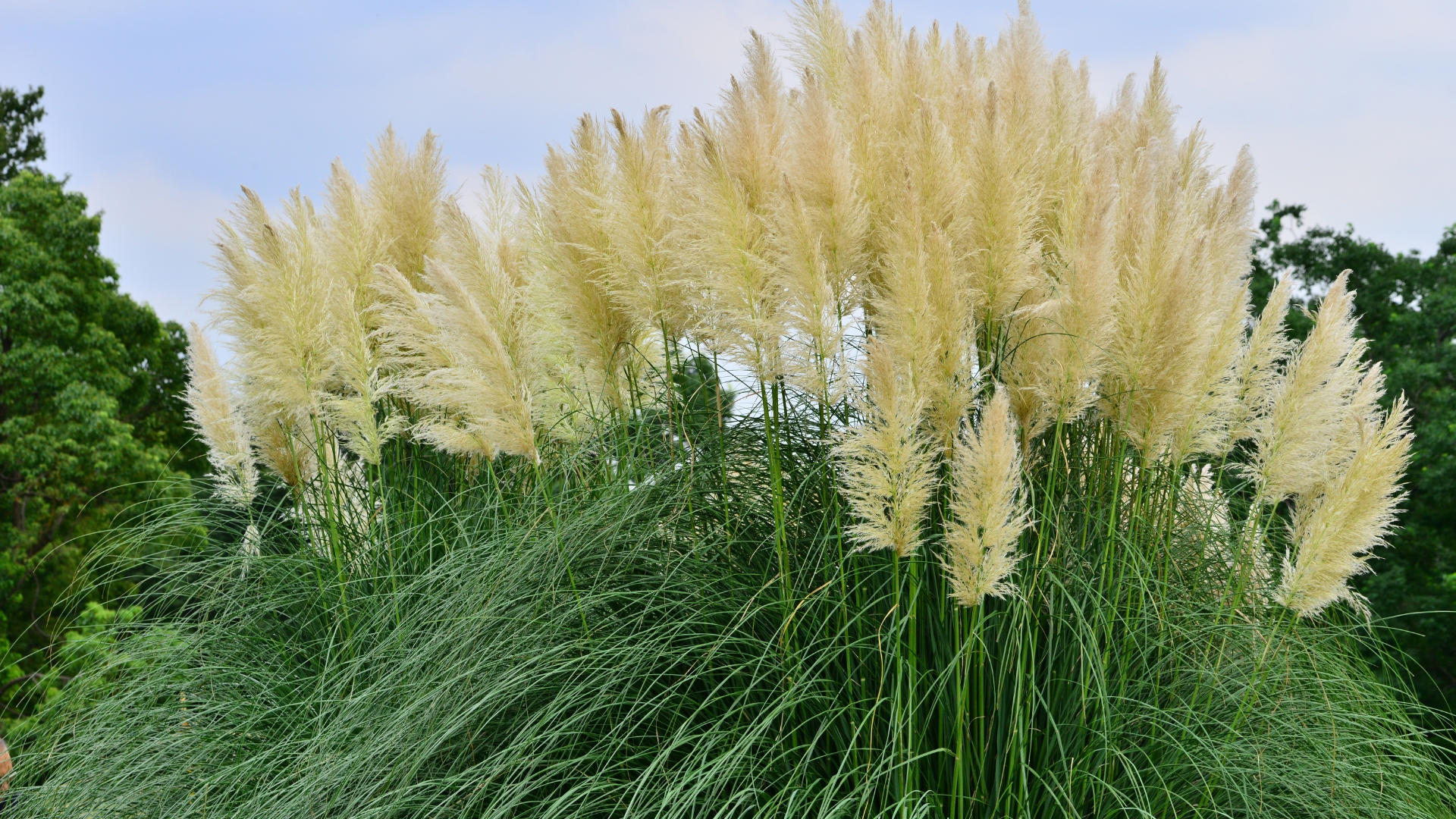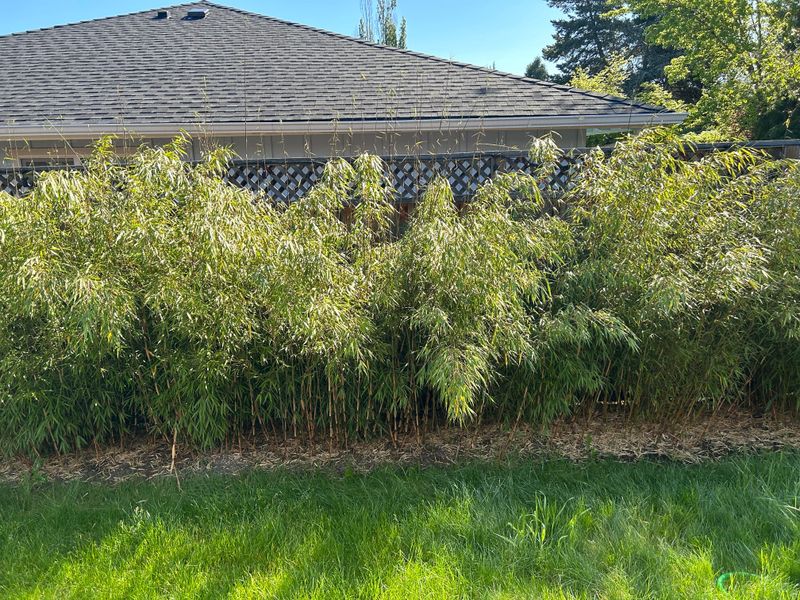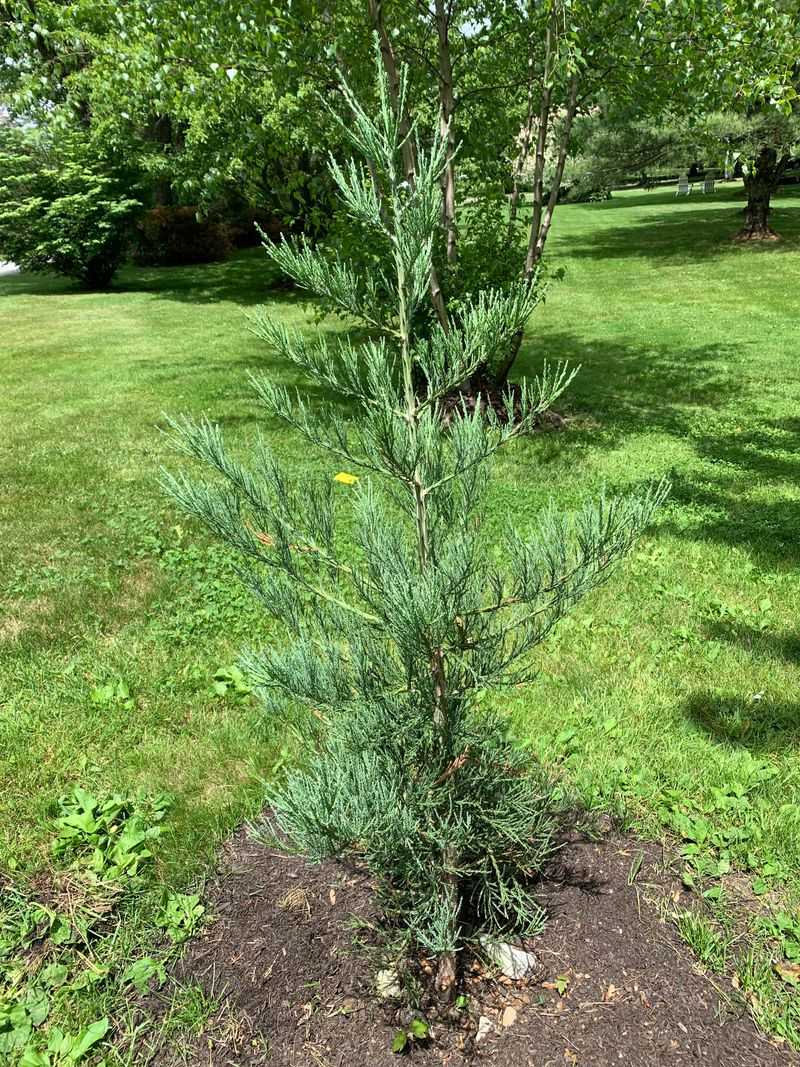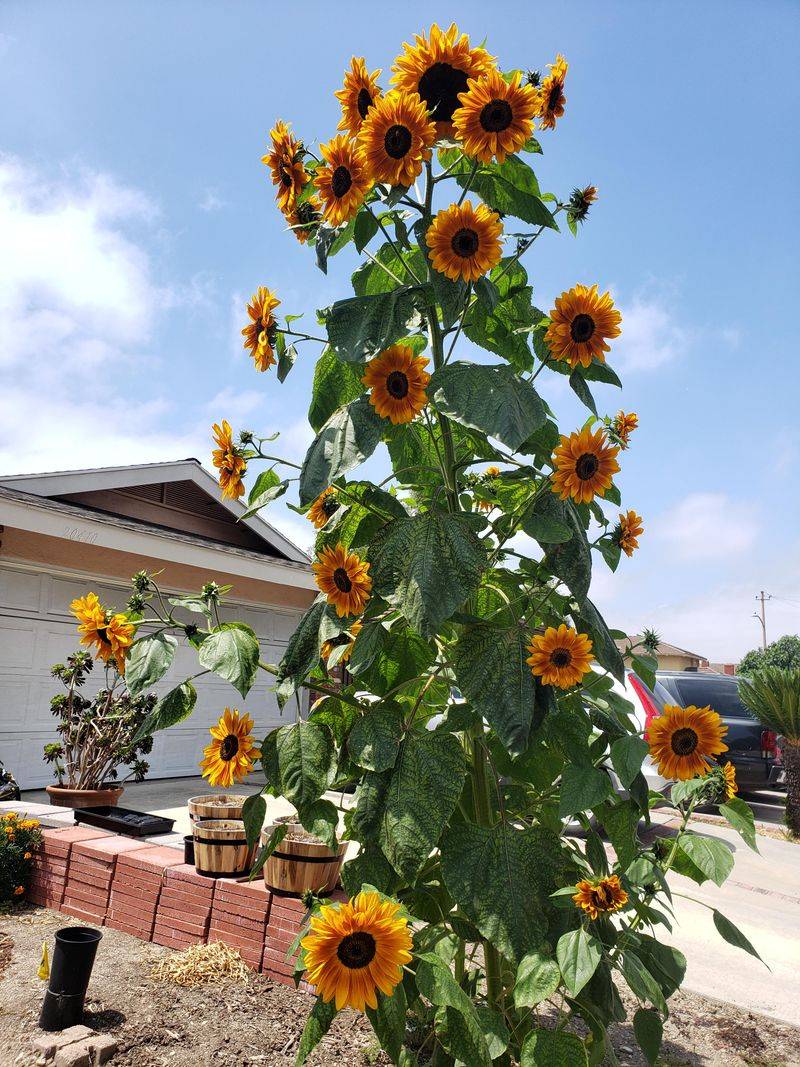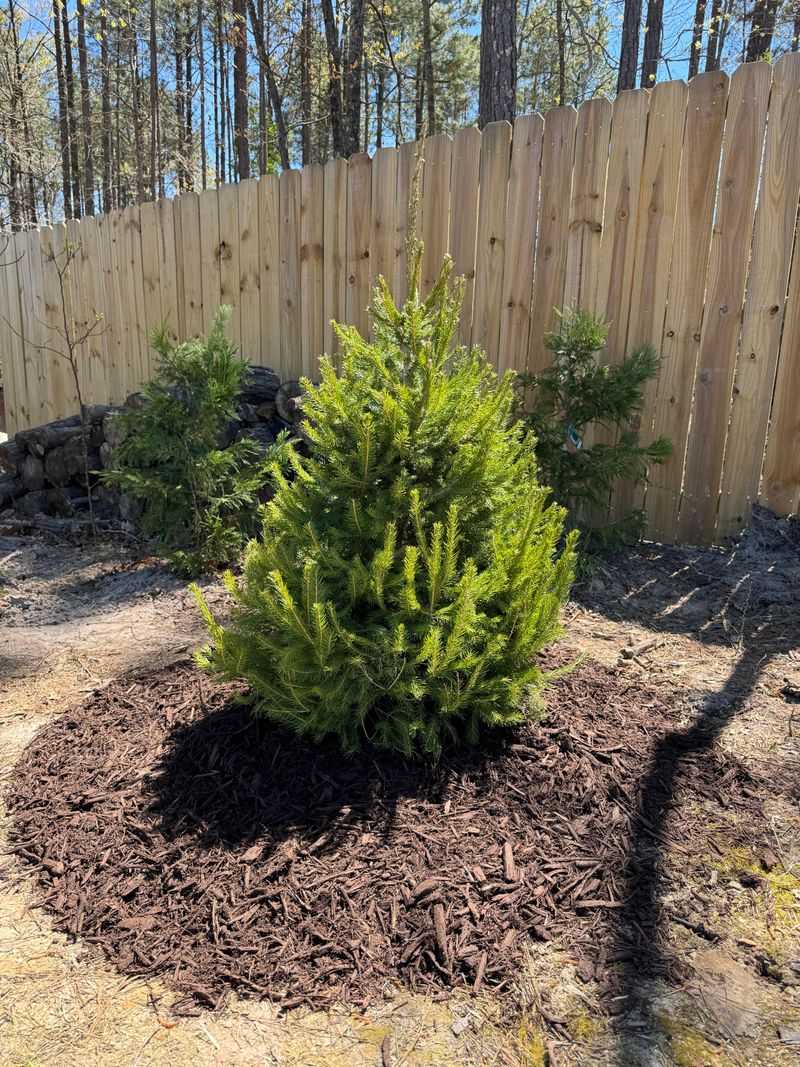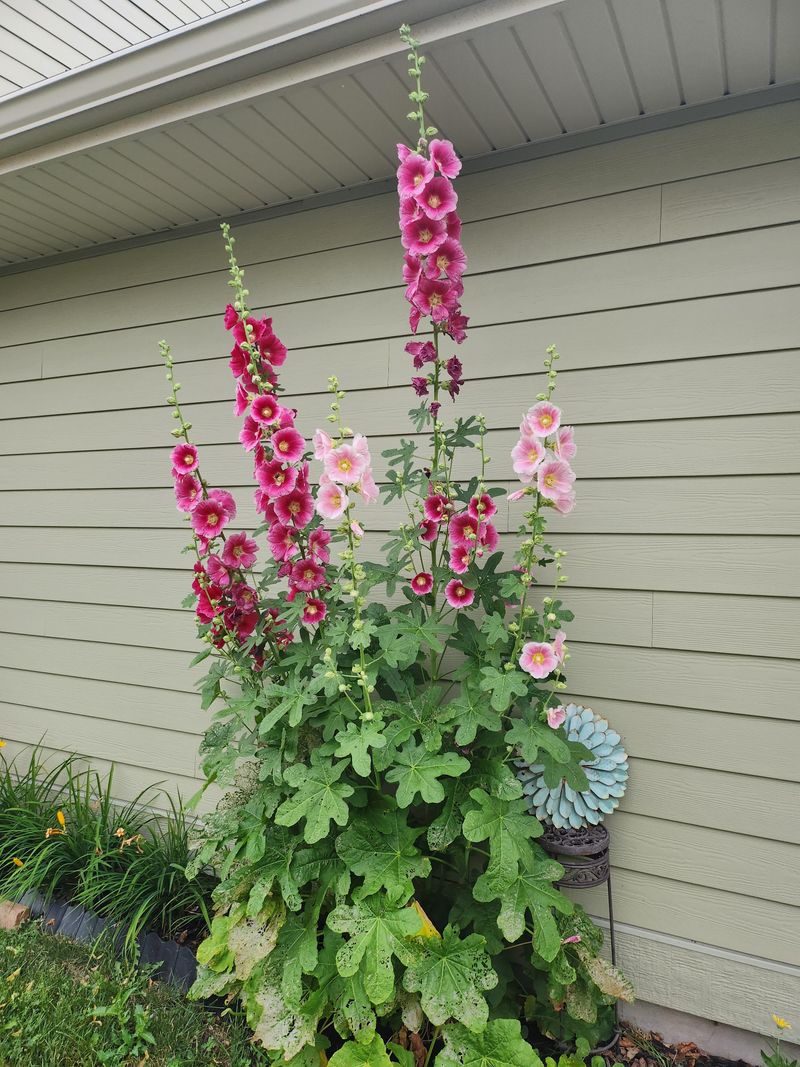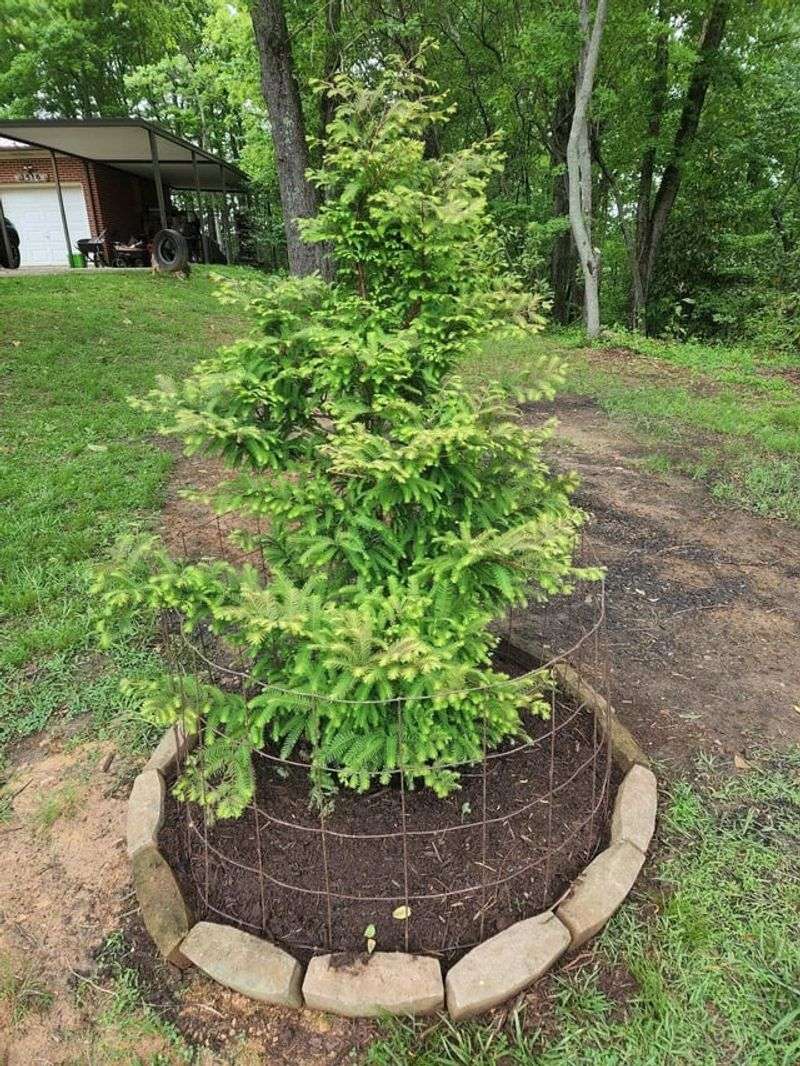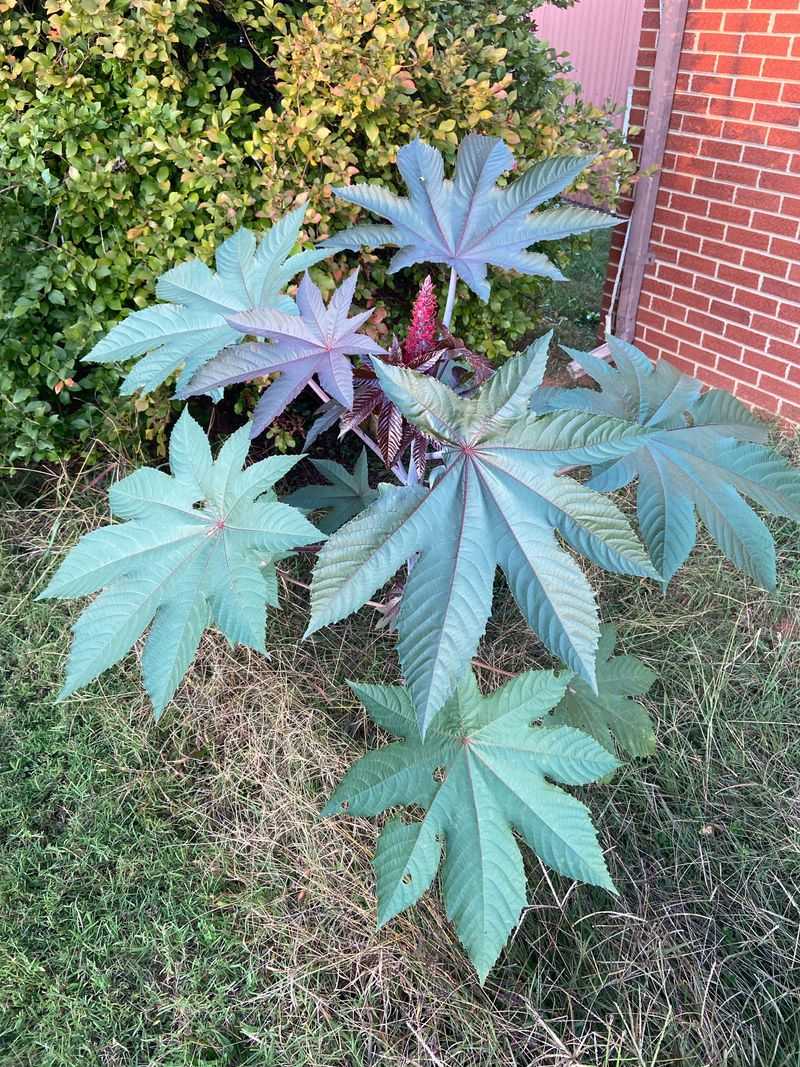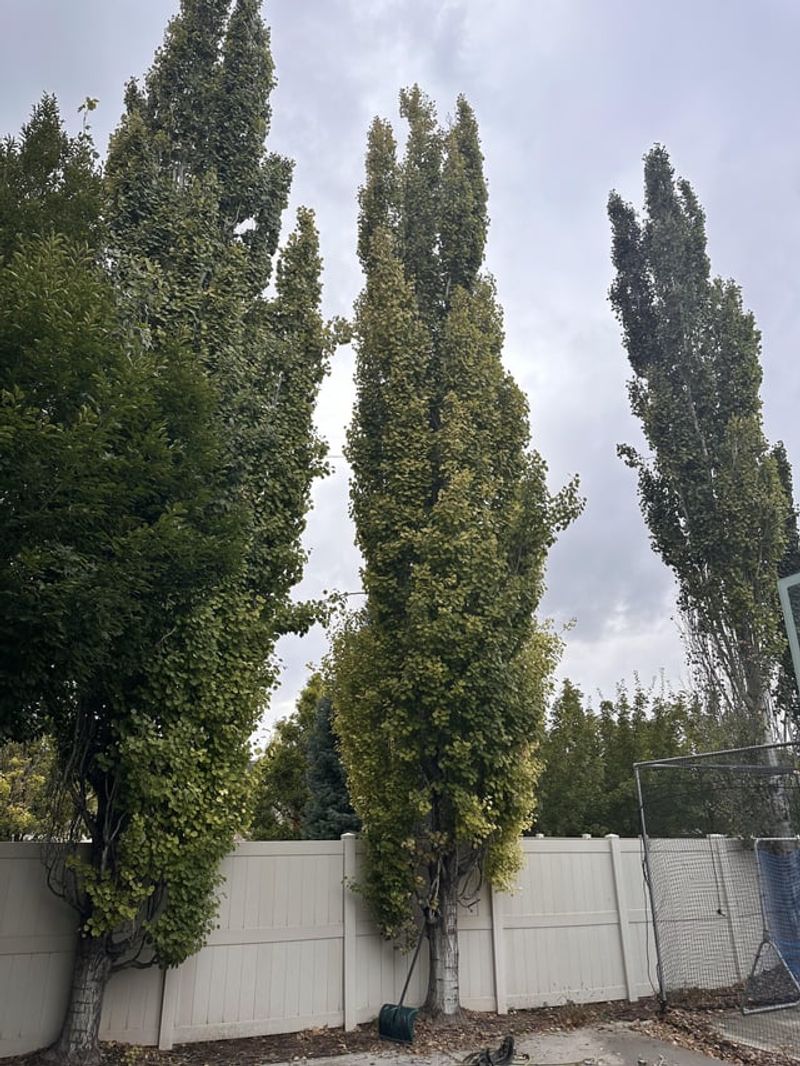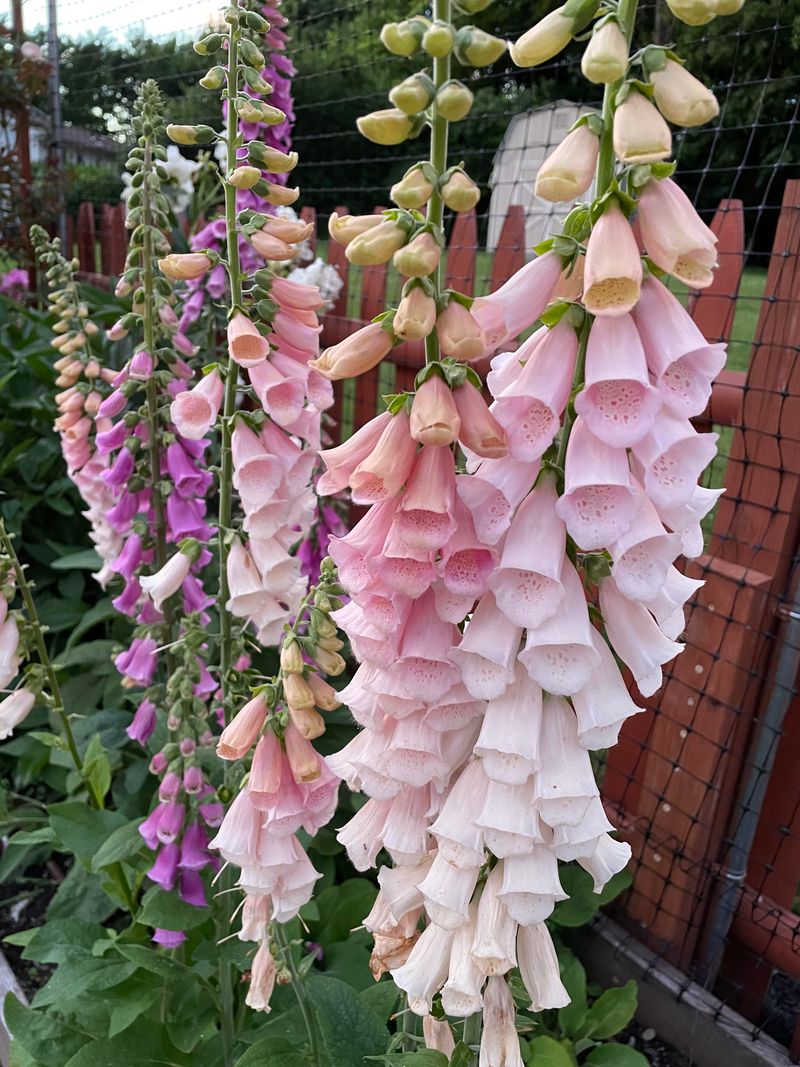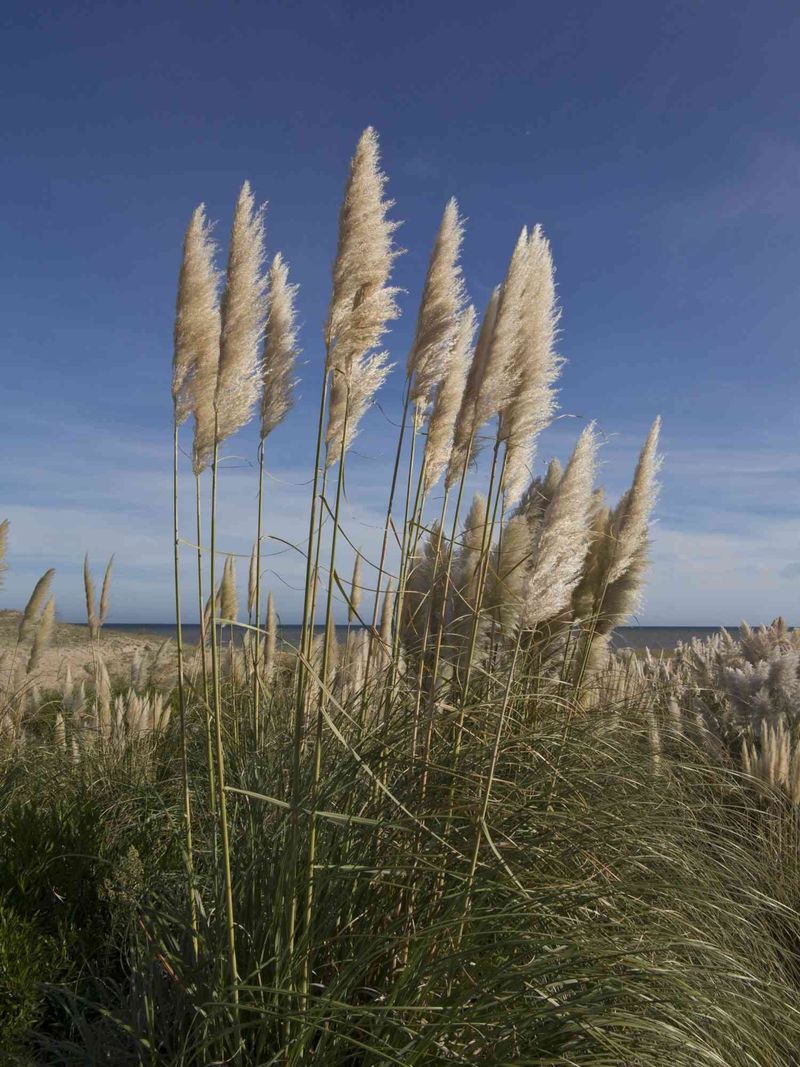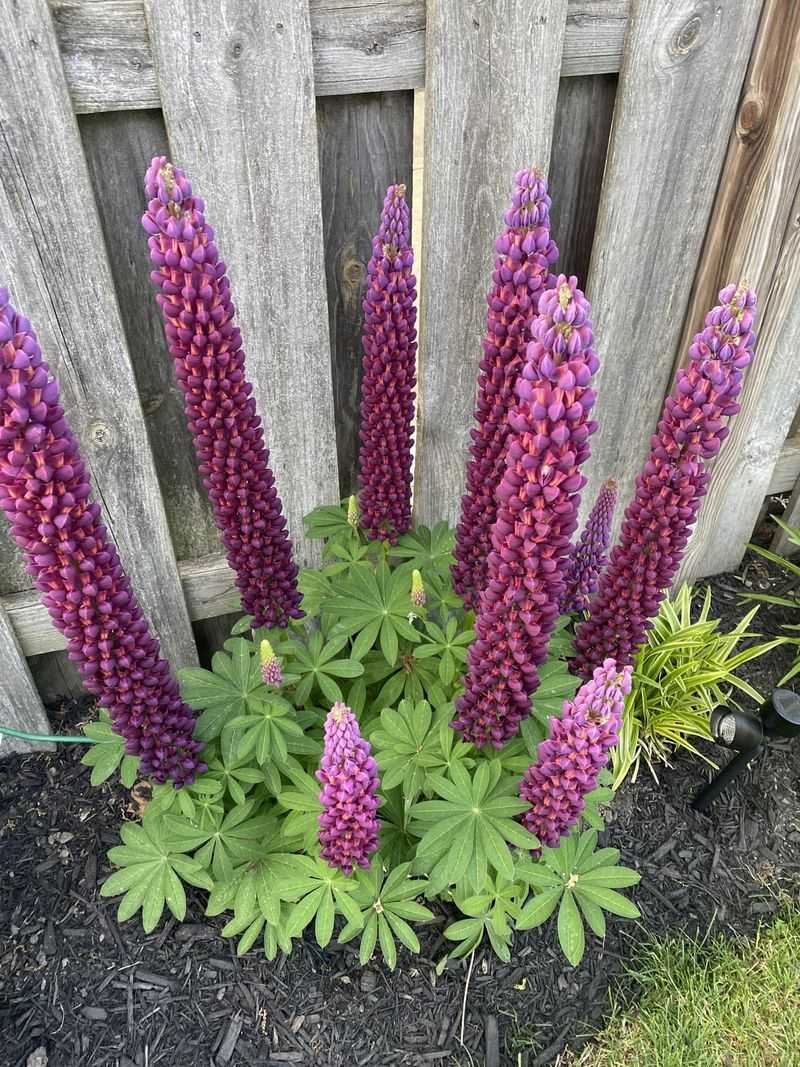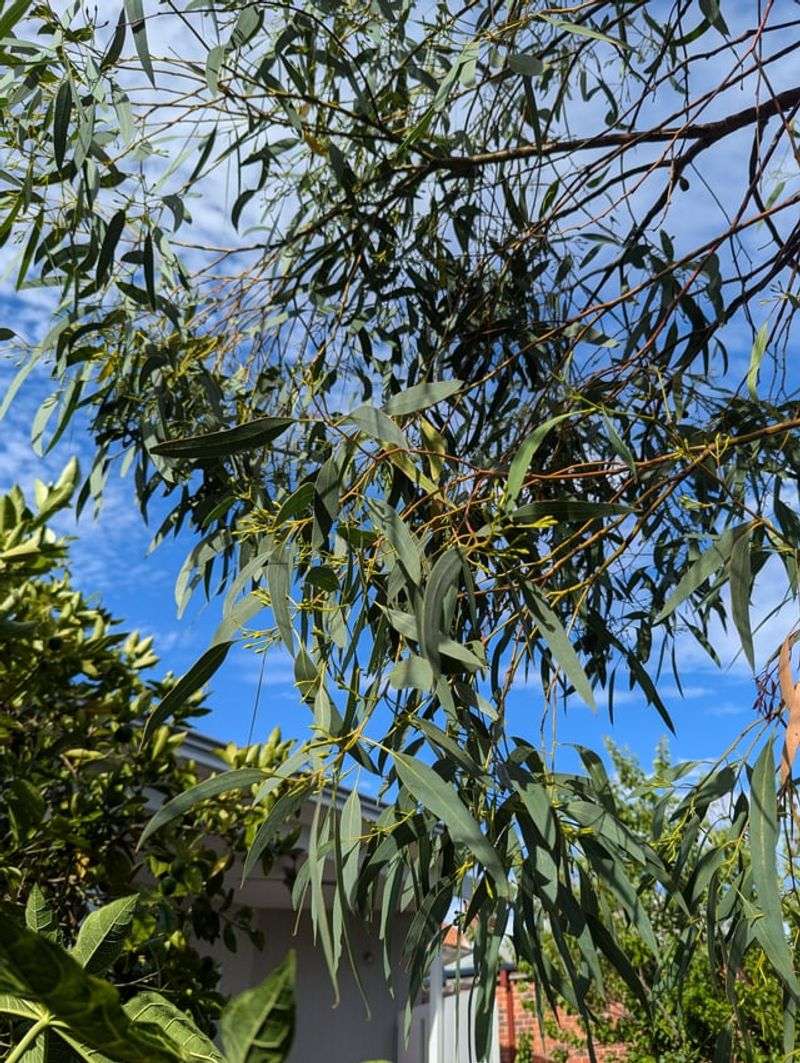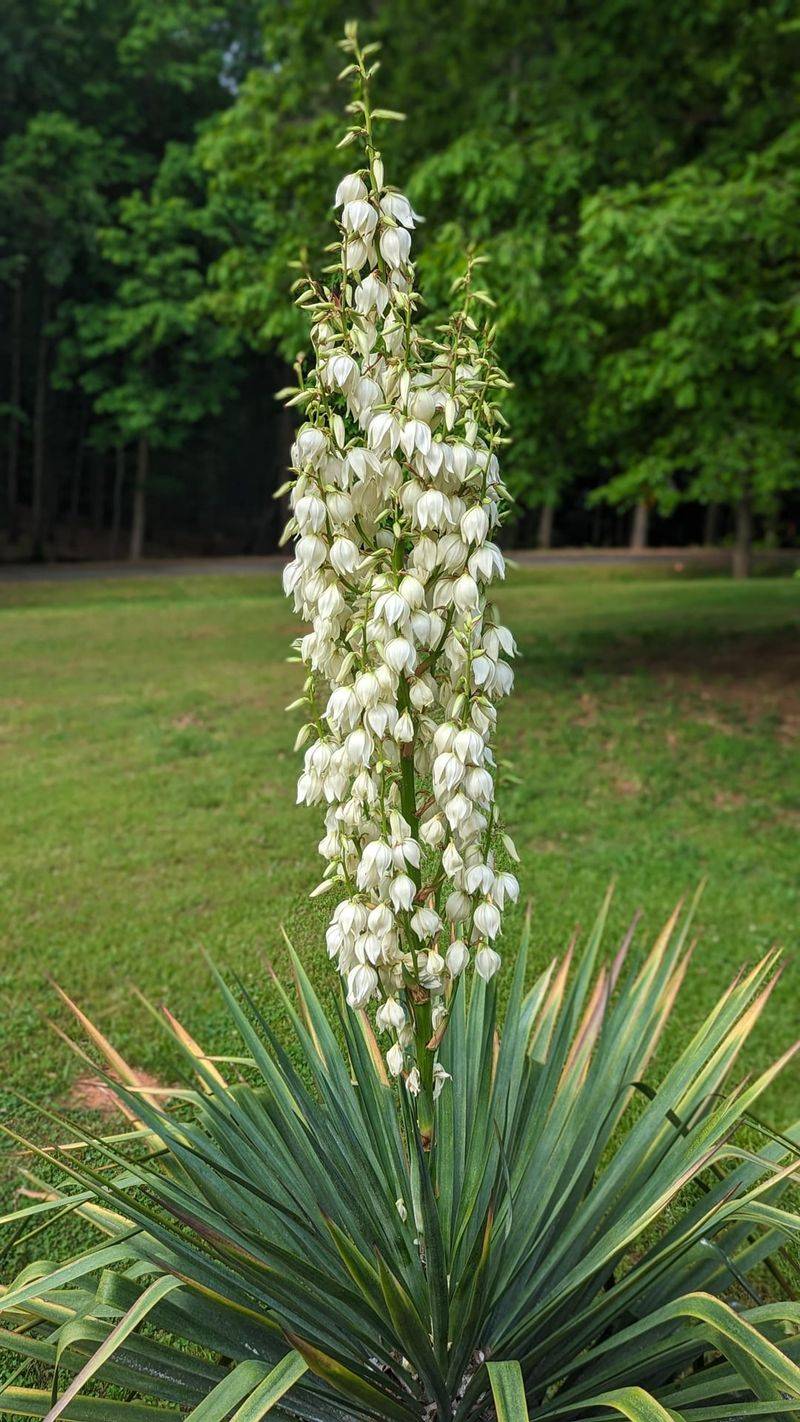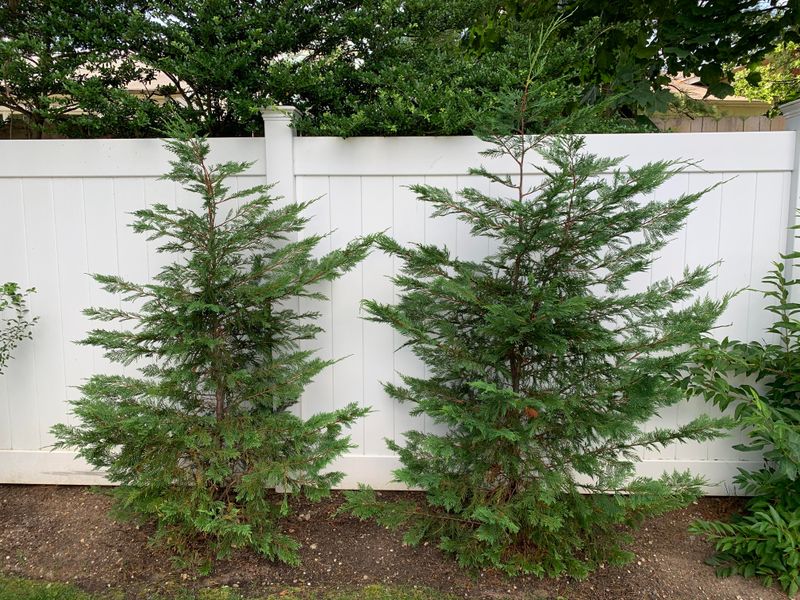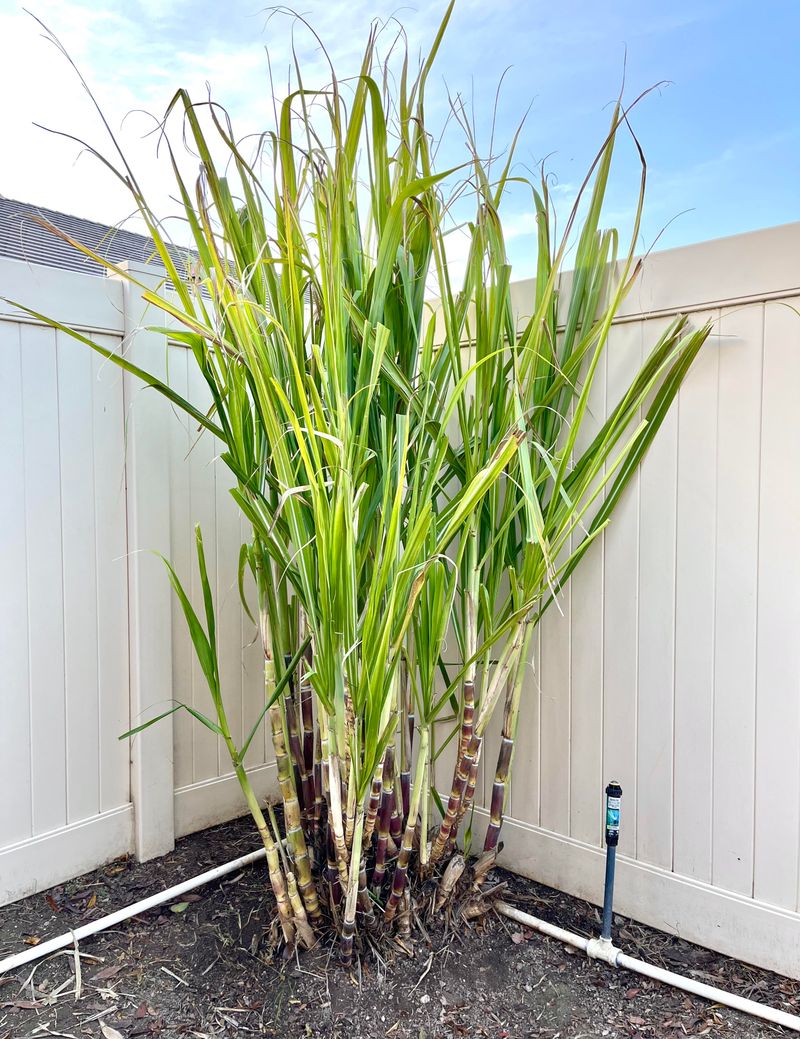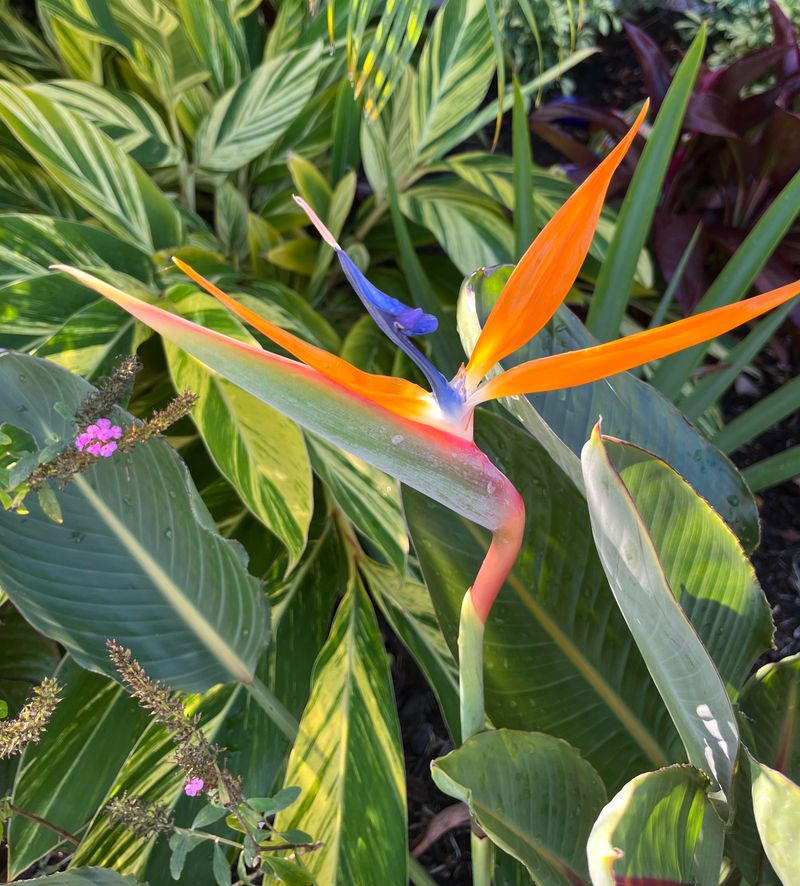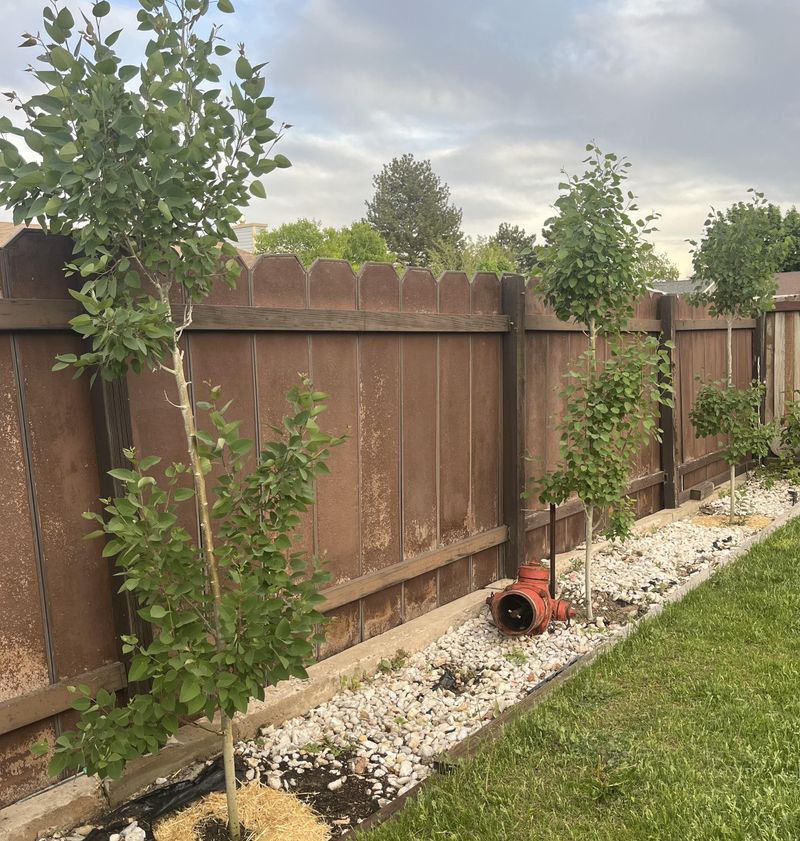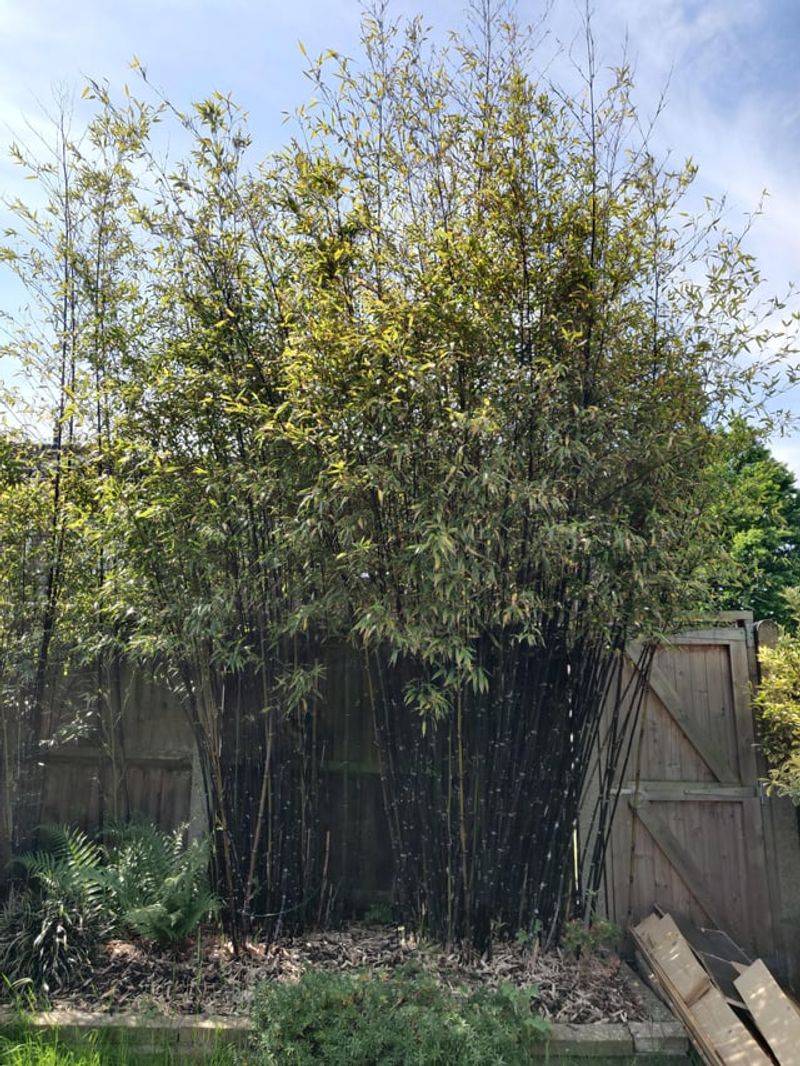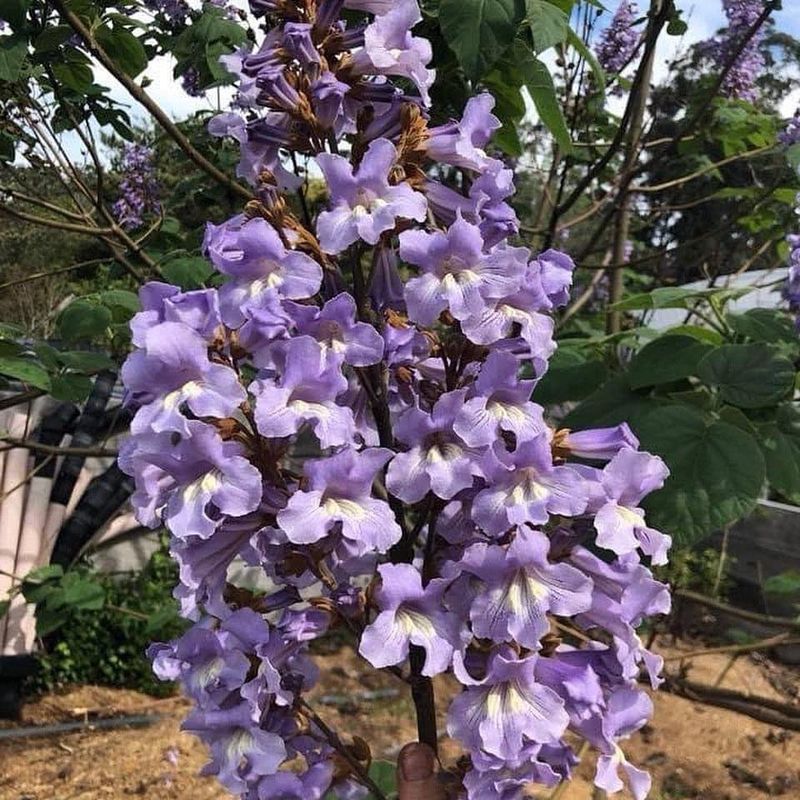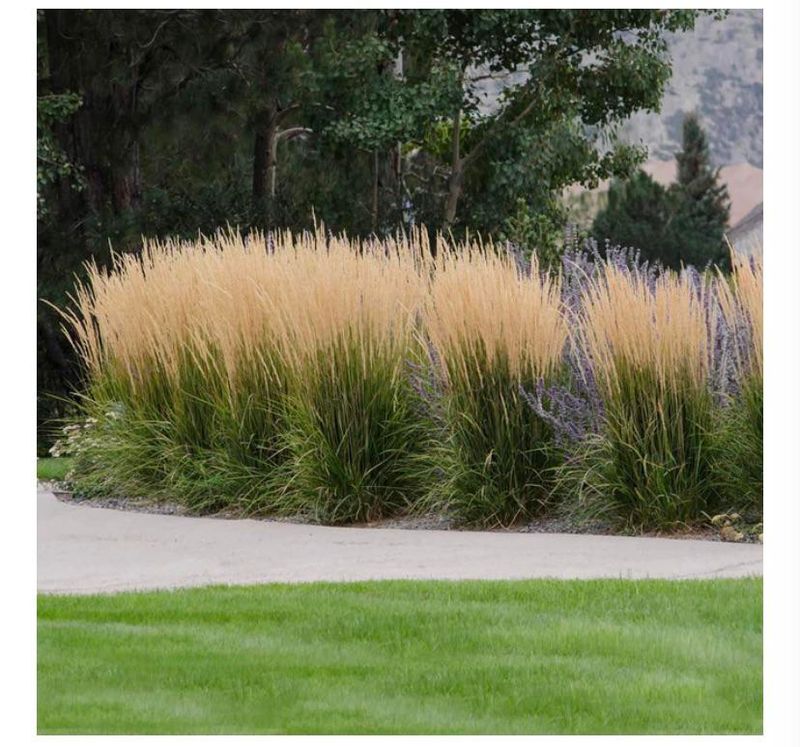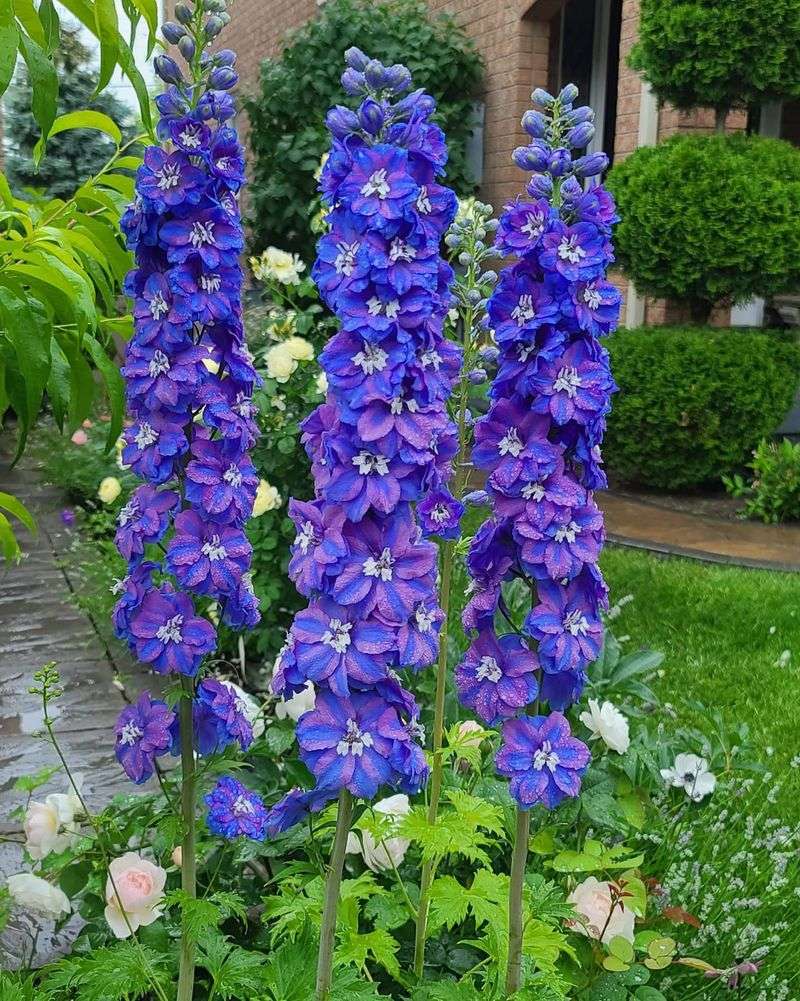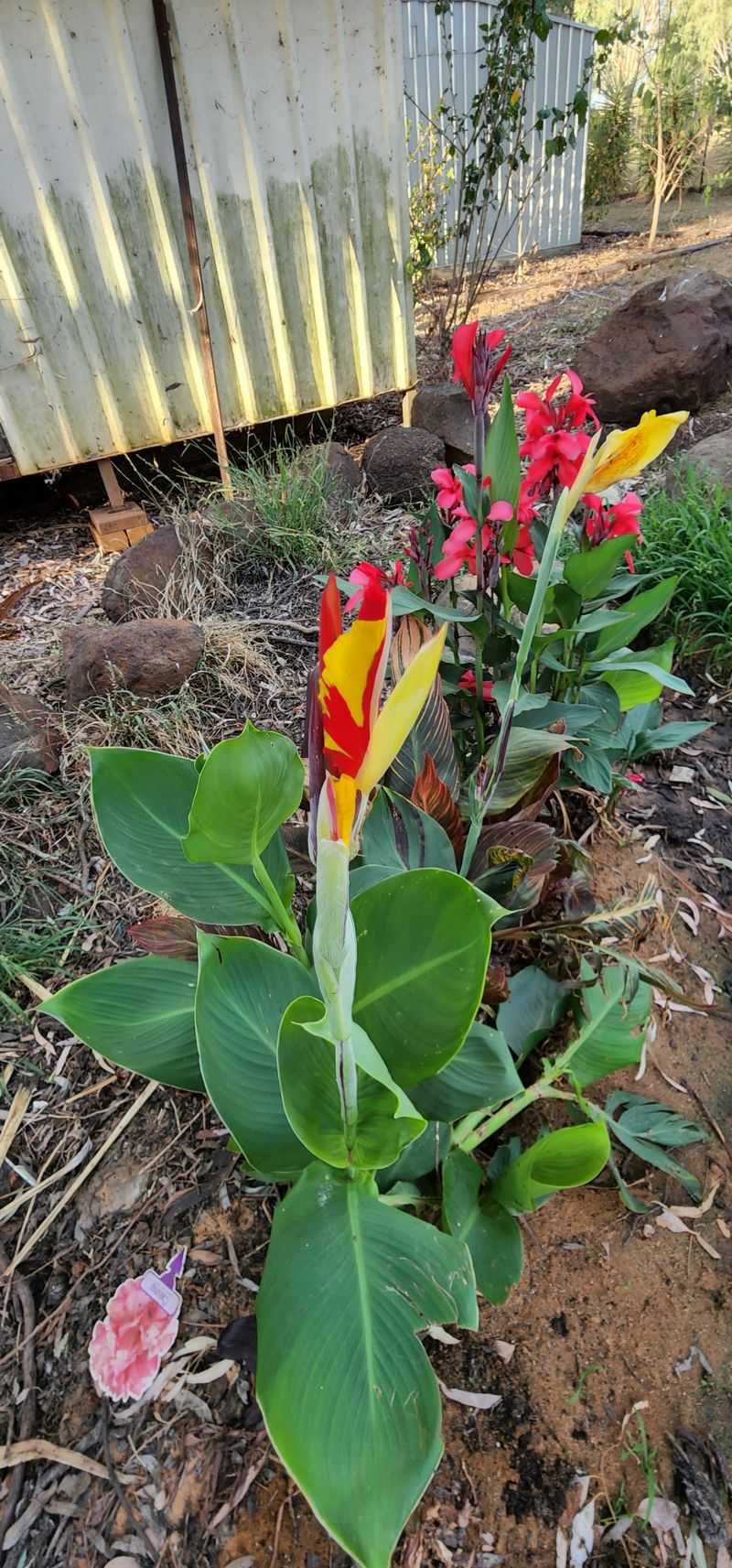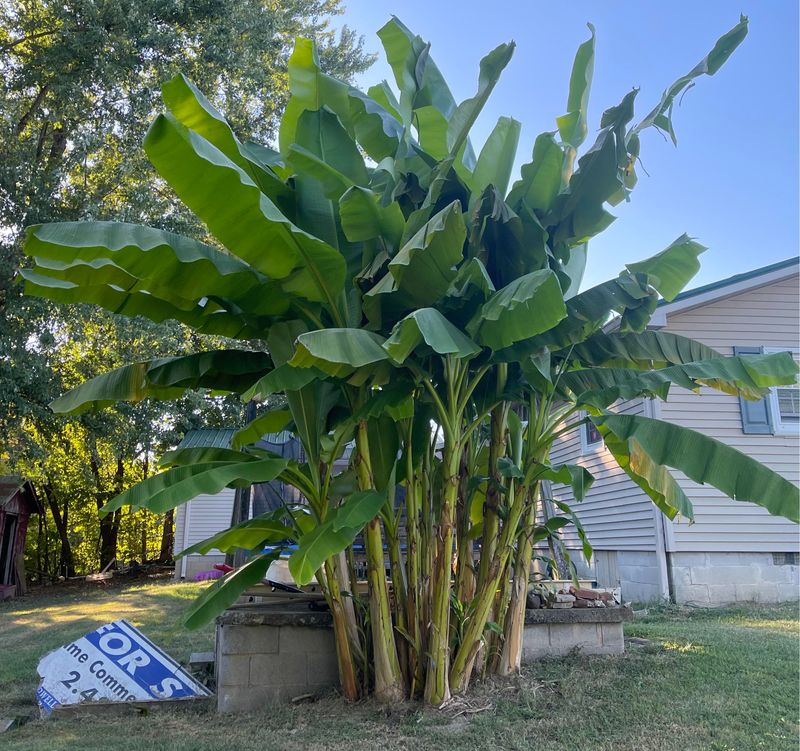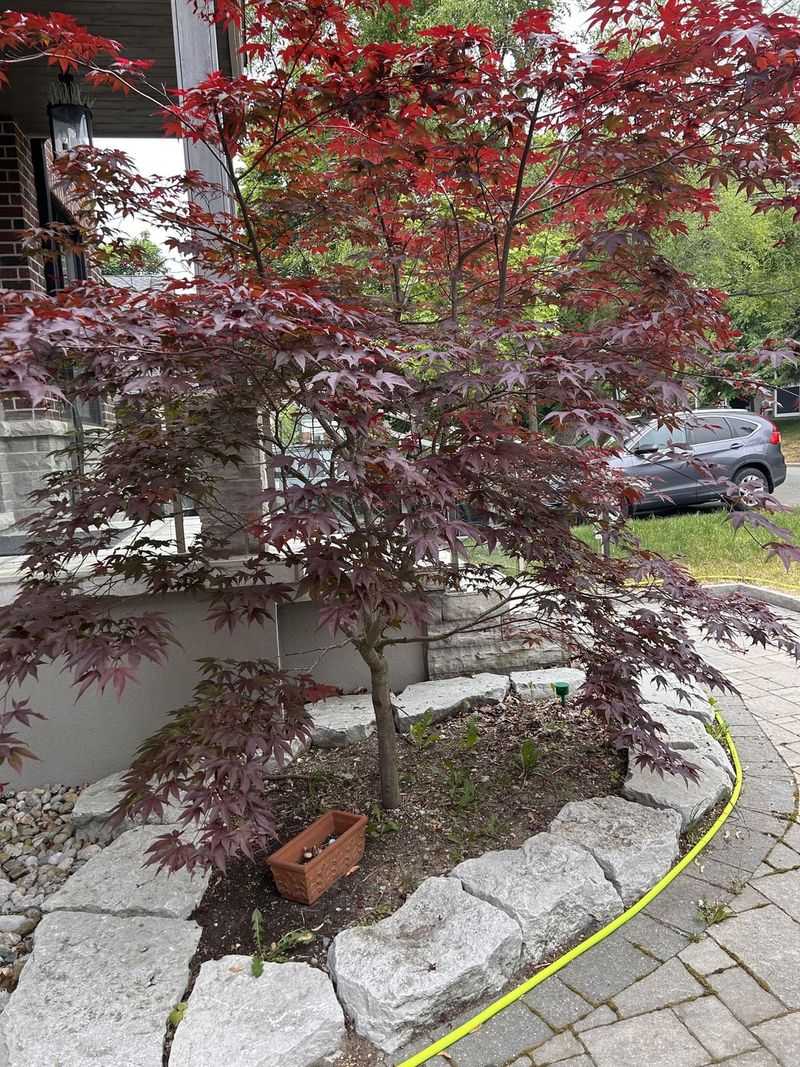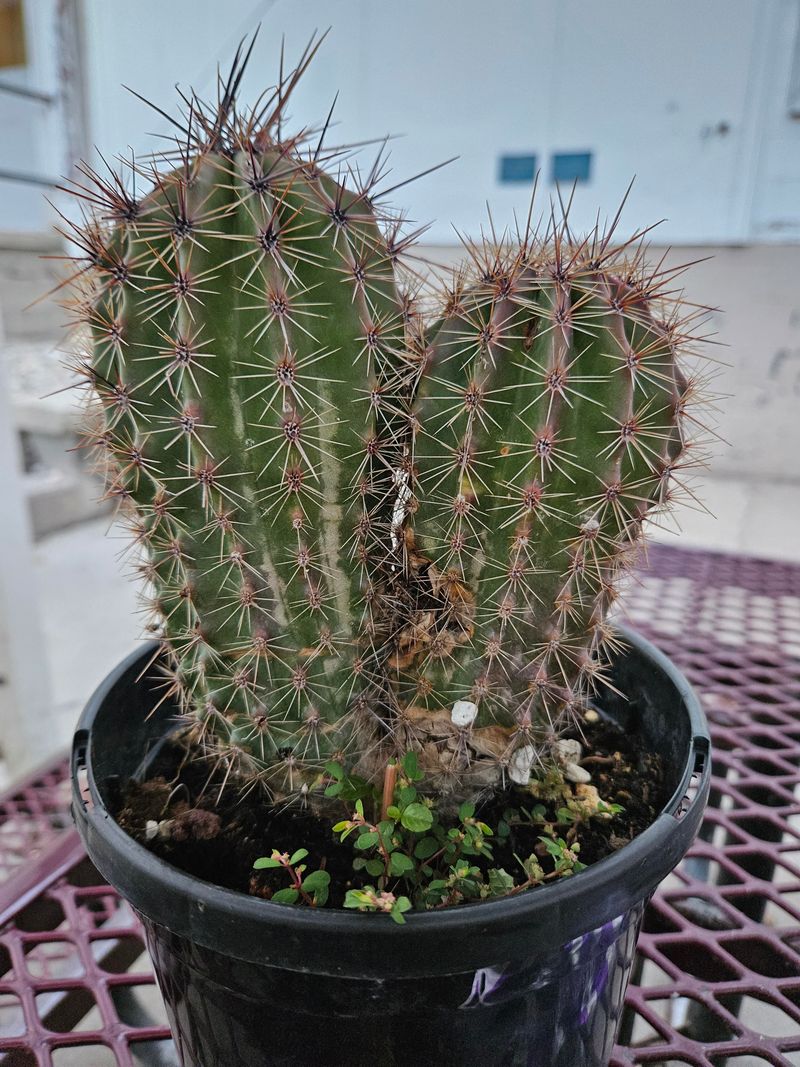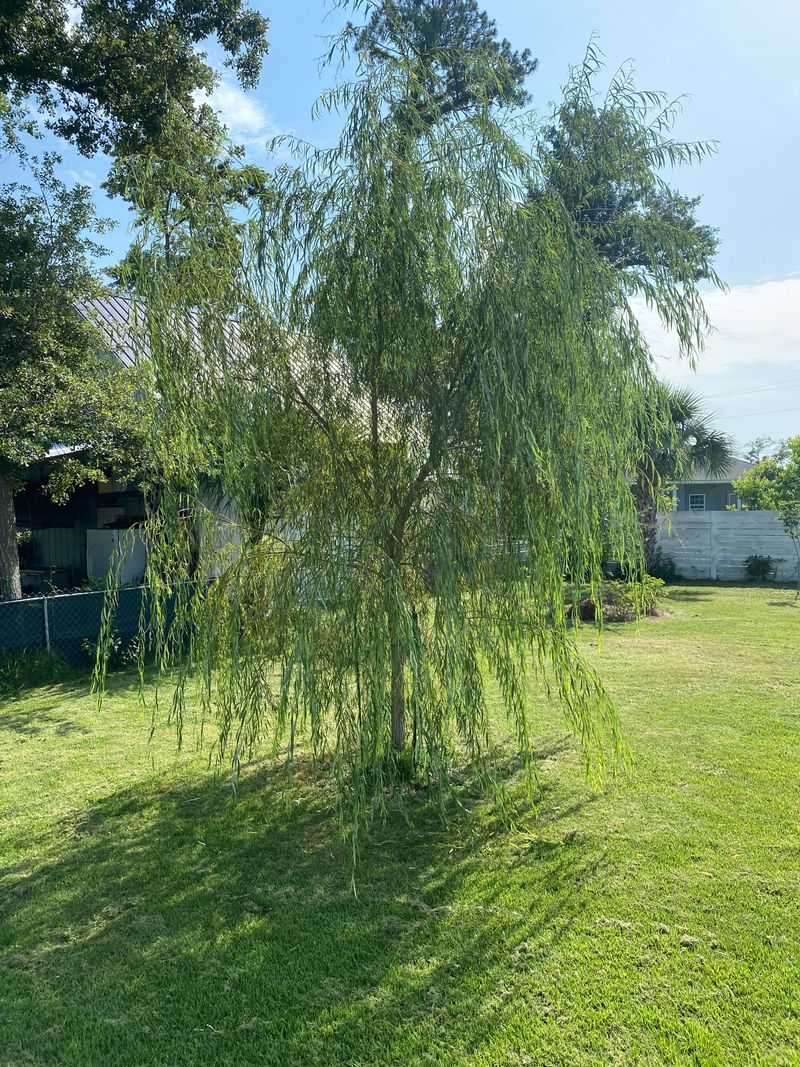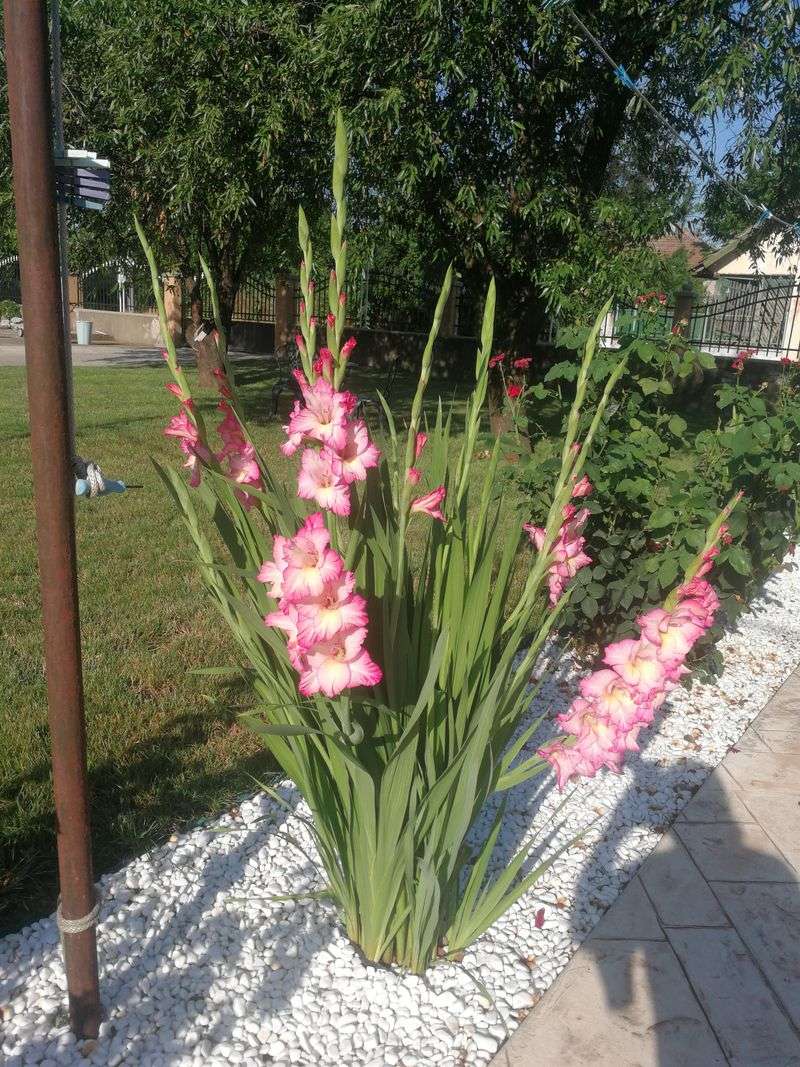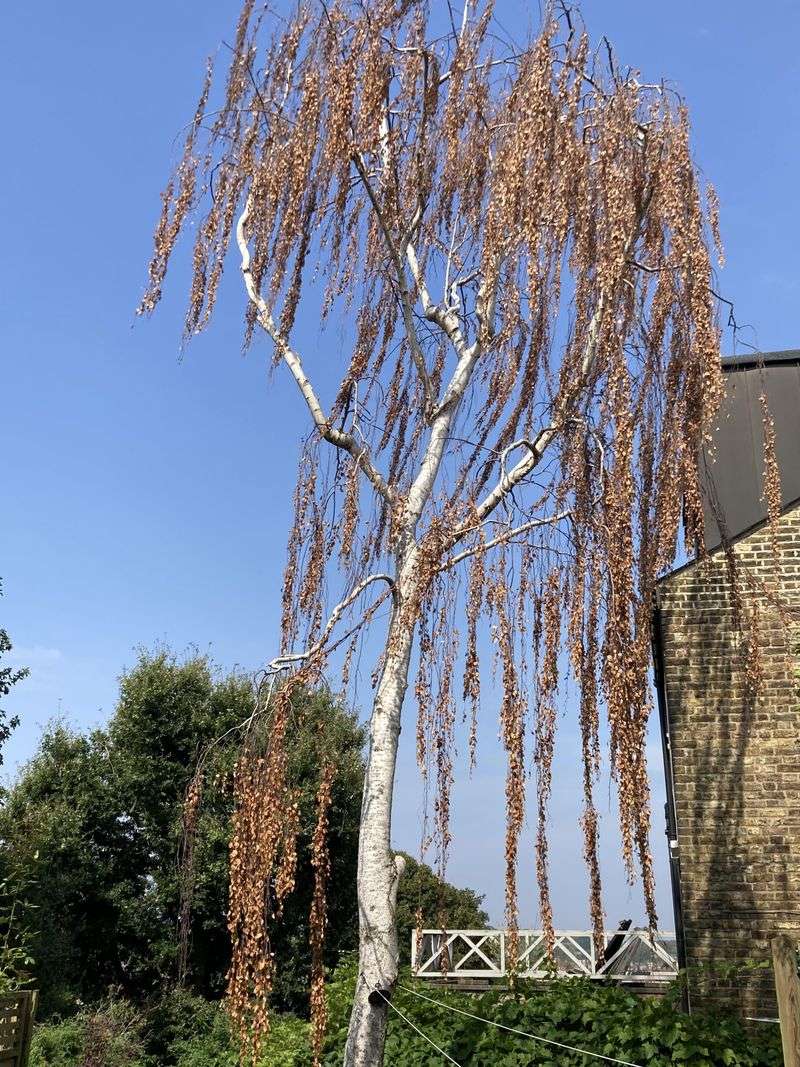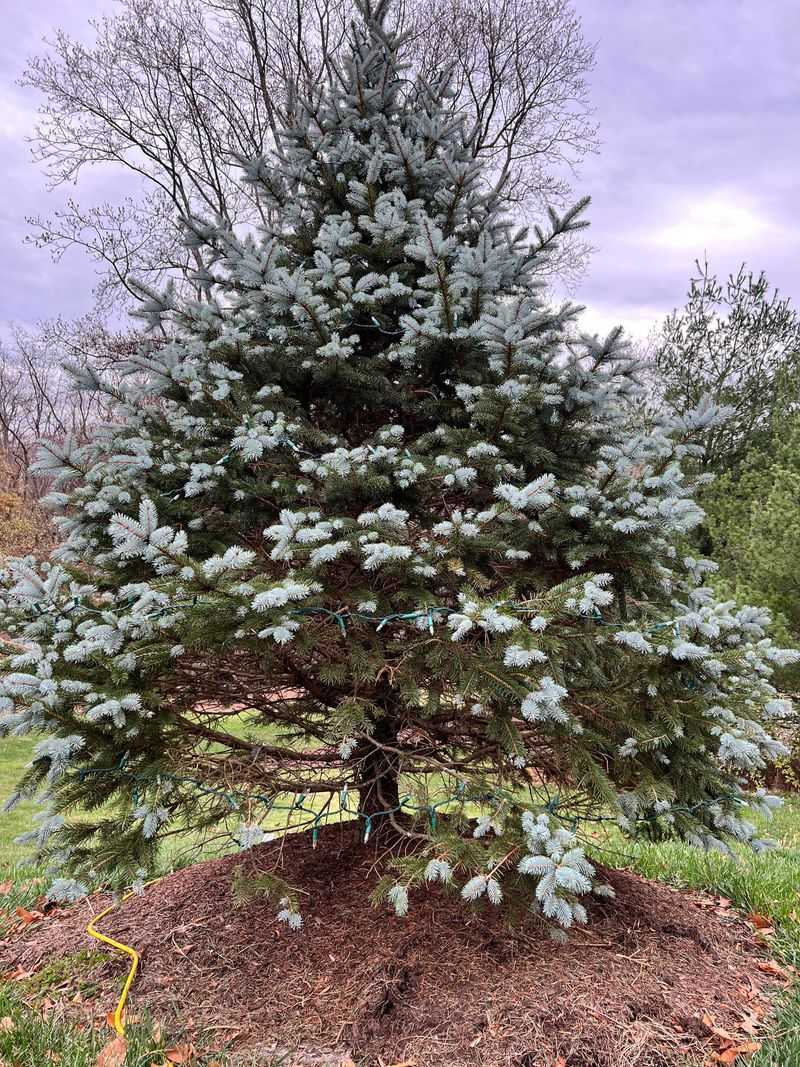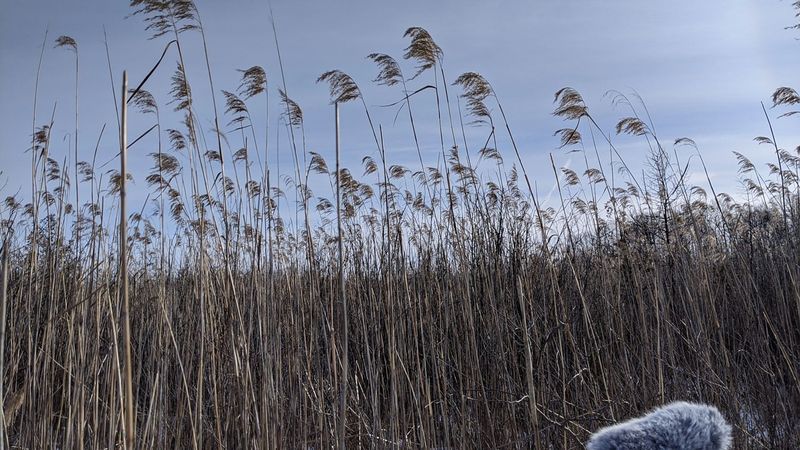Creating a yard that truly stands out takes more than just a patch of green grass. Imagine a lush garden filled with towering plants that sway in the breeze, casting elegant shadows and adding a touch of grandeur to your outdoor space. Tall plants have a way of drawing the eye upward, adding a vertical dimension that’s both dramatic and enchanting. Whether you’re aiming for a tropical paradise or a serene woodland retreat, these 31 tall plants will help transform your yard into a captivating landscape.
1. Bamboo
With their elegant canes and lush foliage, bamboos are a gardener’s dream for creating a tropical oasis. These tall plants sway gently in the breeze, producing a soothing rustling sound that transports you to a far-off land. They are perfect for creating natural privacy screens or windbreaks.
Bamboo is incredibly versatile, thriving in various climates and requiring minimal care. Its rapid growth rate ensures that your garden will be filled with lush greenery in no time.
Did you know? Some species of bamboo can grow up to 3 feet in a single day!
2. Giant Sequoia
The giant sequoia isn’t just a tree; it’s an experience. Standing in its shadow, you feel the passage of time etched into its bark. These towering giants can live for thousands of years, making them a testament to endurance and resilience.
Their massive trunks and evergreen foliage provide year-round interest, turning your garden into a woodland wonderland. Planting a giant sequoia brings both majesty and history to your landscape.
Fun fact: The General Sherman Tree, a giant sequoia, is the largest known single stem tree on earth by volume.
3. Sunflower
Nothing says sunshine quite like a tall sunflower. These cheerful giants bring warmth and joy to any garden, their sunny faces following the sun’s path across the sky. Their height makes them a focal point, capturing attention and admiration.
Sunflowers are more than just pretty faces; they also support wildlife by providing seeds for birds and habitats for insects. Easy to grow from seed, they are ideal for novice gardeners wanting to make a bold statement.
Quirky fact: Sunflowers can be used to extract toxins from the soil, a process known as phytoremediation.
4. Norway Spruce
The Norway spruce stands like a sentinel in the winter garden, its evergreen branches laden with snow. Known for its dense foliage and conical shape, this tree is a classic choice for Christmas decorations.
Beyond the festive season, it provides shelter for wildlife and adds a strong vertical element to your garden design. The Norway spruce is hardy and adaptable, thriving in a range of conditions with little fuss.
Did you know? The oldest known Norway spruce is a staggering 9,560 years old, found in Sweden.
5. Hollyhock
Hollyhocks add a touch of old-fashioned charm to any garden with their towering spikes of flowers. They’re like floral skyscrapers, reaching for the sky in a brilliant array of colors from pinks to purples.
These biennials are easy to care for, thriving in sunny spots and acting as beautiful backdrops for shorter plants. They’re perfect for cottage gardens and provide nectar for pollinators like bees.
Hollyhocks were used in medieval times to color wine and as a medicinal remedy for sore throats.
6. Redwood
Redwoods are the skyscrapers of the natural world, their towering trunks disappearing into the misty canopy above. There’s an awe-inspiring majesty that comes with having a redwood in your garden, turning it into a sanctuary of calm.
These trees grow incredibly tall, their bark thick and deeply furrowed, providing a unique texture to your landscape. Beyond beauty, redwoods play a crucial role in carbon sequestration, helping combat climate change.
Redwoods can live for over 2,000 years, with some dating back to the Roman Empire.
7. Castor Oil Plant
With its striking, star-shaped leaves, the castor oil plant is a showstopper in any garden. Its tropical appearance and rapid growth make it a favorite for those looking to add drama and height to their landscape.
While it’s important to note that the seeds are toxic if ingested, the plant itself is a marvel of nature, attracting both admiration and curiosity.
The castor oil plant is the source of castor oil, which has been used for centuries in medicine and industry.
8. Lombardy Poplar
Lombardy poplars are like the sentinels of the landscape, their tall, narrow form providing structure and elegance. Perfect for lining driveways or pathways, they create a stately avenue that draws the eye and guides the visitor.
These trees are fast growers, quickly reaching impressive heights and providing shade and windbreaks. Their silver-grey bark and vibrant green leaves add a refreshing contrast to any garden setting.
Lombardy poplars were originally cultivated for their role in silk production, as their leaves were used to feed silkworms.
9. Foxglove
Foxgloves bring a touch of elegance and whimsy to the garden with their towering spires of bell-shaped blooms. Their enchanting presence is often associated with fairy tales and woodland creatures, making them a magical addition to your landscape.
While these plants are beautiful, they are also toxic if ingested, so caution is advised in gardens with pets or children.
Did you know? The name ‘foxglove’ is derived from ‘folk’s glove,’ referring to the gloves worn by fairies, according to folklore.
10. Pampas Grass
With its tall, feathery plumes swaying in the breeze, pampas grass creates a sense of movement and texture that’s hard to replicate.
This grass is perfect for creating natural screens or as a dramatic standalone feature. It thrives in sunny locations and requires little maintenance, making it an ideal choice for busy gardeners.
In some regions, pampas grass is considered invasive, so be sure to check local guidelines before planting.
11. Lupine
Lupines are the perfect addition for anyone wanting to infuse color and vertical interest into their garden. Their tall, colorful spires rise like floral exclamation points, adding vibrancy and drama.
These plants are not only beautiful but also beneficial, as they can fix nitrogen in the soil, improving its fertility. They attract a variety of pollinators, ensuring a lively and healthy garden ecosystem.
Lupines have been cultivated for thousands of years and were a staple food for ancient Andean cultures.
12. Eucalyptus
These tall trees are known for their aromatic leaves and smooth, peeling bark, creating a unique visual and sensory experience.
Eucalyptus trees are fast growers and can quickly provide shade and shelter, making them great additions to any garden. They are particularly suited to warmer climates and can tolerate drought once established.
Did you know? Eucalyptus leaves are the primary food source for koalas, who are famously picky eaters.
13. Yucca
Yucca plants are the desert’s answer to tall, dramatic foliage. Their spiky leaves and towering flower stalks create an architectural statement that brings a touch of the arid landscape to any garden.
These hardy plants are drought-tolerant and can thrive in poor soil, making them an excellent choice for low-maintenance gardens. Their striking silhouette adds a modern edge to traditional garden designs.
The yucca flower is the state flower of New Mexico, celebrated for its enduring beauty and resilience.
14. Cypress
Their tall, slender form and rich, dark foliage create a stunning silhouette, especially when planted in rows or as standalone features.
These trees are versatile and can thrive in various conditions, providing windbreaks, privacy screens, and aesthetic appeal. Cypress wood is highly valued for its durability and resistance to decay.
Did you know? Cypress trees have been symbols of mourning and immortality since ancient times, often planted in cemeteries and sacred spaces.
15. Sugar Cane
Sugar cane brings a touch of the tropics with its tall, swaying stalks. This giant grass is not only a source of sugar but also adds a lush, vibrant feel to any garden landscape.
While primarily grown in tropical regions, sugar cane can be cultivated in warmer climates as a unique ornamental feature. Its height and density make it an excellent natural screen or windbreak.
Sugar cane was first domesticated over 4,000 years ago in New Guinea and has since spread worldwide, shaping culinary traditions.
16. Bird of Paradise
This tall plant conjures images of tropical paradises, infusing your garden with a sense of exotic wonder.
While it thrives in sunny, protected spots, it requires patience, as it can take a few years to bloom. Once it does, the dramatic payoff is well worth the wait.
Despite its tropical appearance, the bird of paradise is native to South Africa, where it’s also known as the crane flower.
17. Aspen
Aspen trees are nature’s golden treasures, especially in autumn when their leaves turn a brilliant yellow. Their tall, slender trunks and shimmering foliage create an ever-changing tapestry of light and shadow.
Aspens are known for their rapid growth and ability to thrive in a variety of environments, making them a versatile choice for many gardeners. They also have a fascinating root system that connects entire groves, allowing them to regenerate quickly after disturbances.
18. Black Bamboo
With its ebony canes and lush green leaves, Black bamboo is a plant of stark contrasts, creating a dramatic visual impact. Its tall, elegant form is perfect for adding a touch of the exotic to your garden.
This bamboo variety grows rapidly and requires minimal maintenance, providing a quick privacy screen or windbreak. It thrives in a range of conditions but prefers moist, well-drained soil.
Despite its tropical appearance, black bamboo can tolerate cold temperatures, making it a versatile garden choice.
19. Paulownia
The Paulownia tree, with its lush foliage and fragrant, lavender blossoms, is a sight to behold. This fast-growing tree is a favorite for those looking to add both height and floral beauty to their gardens.
Paulownia’s large leaves provide excellent shade, and its rapid growth makes it a popular choice for reforestation projects. The wood is lightweight and used in crafting musical instruments and furniture.
The Paulownia is often called the ‘princess tree,’ as it was traditionally planted when a girl was born in some cultures.
20. Fountain Grass
With its tall, arching plumes that sway gracefully in the breeze, Fountain grass is the epitome of elegance. This ornamental grass adds texture and movement to gardens, creating a serene and naturalistic setting.
It’s adaptable and easy to grow, making it a popular choice for both novice and experienced gardeners. Whether planted in borders or containers, fountain grass provides a striking visual impact.
Did you know? Fountain grass is often used in xeriscaping, a landscaping method that reduces or eliminates the need for irrigation.
21. Delphinium
Delphiniums are the aristocrats of the flower world, their tall spikes adorned with clusters of blue blossoms. These stately plants add a touch of drama and sophistication to any garden, particularly in cottage or formal gardens.
They require a bit of care, preferring rich, well-drained soil and a sunny location, but the stunning display they provide is well worth the effort. Delphiniums attract pollinators, contributing to a healthy garden ecosystem.
Delphinium is named after the Greek word for dolphin, due to the shape of its buds.
22. Canna
With their bold foliage and vibrant blooms, Canna plants are the tropical showstoppers of the garden world. Their tall, robust stems make them ideal for adding a splash of color and height to any garden setting.
Cannas thrive in sunny, warm climates and are relatively easy to care for, requiring regular watering to maintain their lush appearance. They can be grown in containers or directly in the ground, making them versatile garden additions.
Cannas are often used in traditional medicine practices in parts of Asia and South America.
23. Banana Plant
These tall plants can make any garden feel like an exotic retreat, providing shade and a touch of the extraordinary.
While they require warmth and humidity, with the right conditions, banana plants grow rapidly, rewarding gardeners with both their beauty and occasionally, their fruit.
Did you know? Banana plants are technically giant herbs, as their ‘trunks’ are made up of tightly packed leaf bases rather than wood.
24. Japanese Maple
Japanese maples are the jewels of the garden, their delicate leaves turning brilliant shades of red, orange, and yellow in the fall. Their graceful form and vibrant colors make them a centerpiece in any landscape.
These trees are ideal for adding depth and interest, thriving in various conditions and requiring minimal maintenance once established. Their leafy canopy provides dappled shade, perfect for creating tranquil garden spaces.
In Japan, it’s believed that Japanese maples bring peace and serenity to the soul, symbolizing grace and subtlety.
25. Tulip Tree
These spectacular tall trees are perfect for creating a canopy of shade and a burst of color when in bloom.
The tulip tree is a fast grower, making it an excellent choice for those looking to quickly transform their landscape. Its wood is also valued for its durability and workability.
The tulip tree is the state tree of Kentucky, Indiana, and Tennessee, beloved for its elegant form and flowers.
26. Saguaro Cactus
The saguaro cactus is the iconic symbol of the American desert, its tall, columnar form and branching arms creating a dramatic silhouette against the sky. These giants thrive in arid conditions, bringing a touch of the wild west to any garden.
Saguaros are slow-growing but can live for over a century, providing food and habitat for desert wildlife. Their striking form and resilience make them a standout feature in xeriscapes.
The saguaro blossom is the state flower of Arizona, celebrated for its beauty and ecological significance.
27. Weeping Willow
The weeping willow is the epitome of grace and elegance, its drooping branches creating a peaceful canopy over gardens and ponds. It’s a tree that invites contemplation and relaxation, offering a sense of calm with its flowing form.
Weeping willows thrive near water, making them ideal for planting alongside ponds or streams where their roots can access moisture. Their fast growth and lush appearance make them a favorite for natural landscapes.
In folklore, the weeping willow symbolizes mourning and resurrection, often associated with rivers and water spirits.
28. Gladiolus
These plants are perfect for adding vertical interest and a splash of color to borders and cut flower arrangements.
Gladioli are easy to grow from bulbs and thrive in sunny, well-drained locations. They are a favorite among gardeners for their long-lasting blooms and ability to attract pollinators.
Gladiolus is often associated with strength and integrity, derived from the Latin word ‘gladius,’ meaning sword.
29. Silver Birch
Known for its striking white bark, this tree adds elegance and light to gardens and woodland settings.
Silver birches are adaptable, thriving in various soil types and climates, and their slender form allows them to fit into smaller garden spaces. They provide year-round interest and attract wildlife with their seeds and habitat.
Birch bark has been used for centuries in crafting and writing, known for its durability and flexibility.
30. Blue Spruce
The blue spruce is a winter wonderland staple, its bluish-green needles offering a splash of color in snowy landscapes. This tall evergreen is known for its symmetrical form and striking appearance, making it a favorite for ornamental gardens.
Blue spruces are hardy and adaptable, thriving in colder climates and providing year-round beauty and shelter for wildlife. Their wood is also prized for its strength and workability.
The blue spruce is the state tree of Colorado, celebrated for its stunning beauty and resilience.
31. Giant Reed
Giant reeds bring a touch of the wild with their tall, bamboo-like stalks that reach for the sky. These grasses create dense screens and natural barriers, perfect for adding privacy and a sense of seclusion to any garden.
They thrive in wet conditions but can adapt to drier environments, making them versatile additions to various landscapes. Their rapid growth and low maintenance make them ideal for busy gardeners.
Giant reeds have been used traditionally for making musical instruments and as a source of bioenergy.

